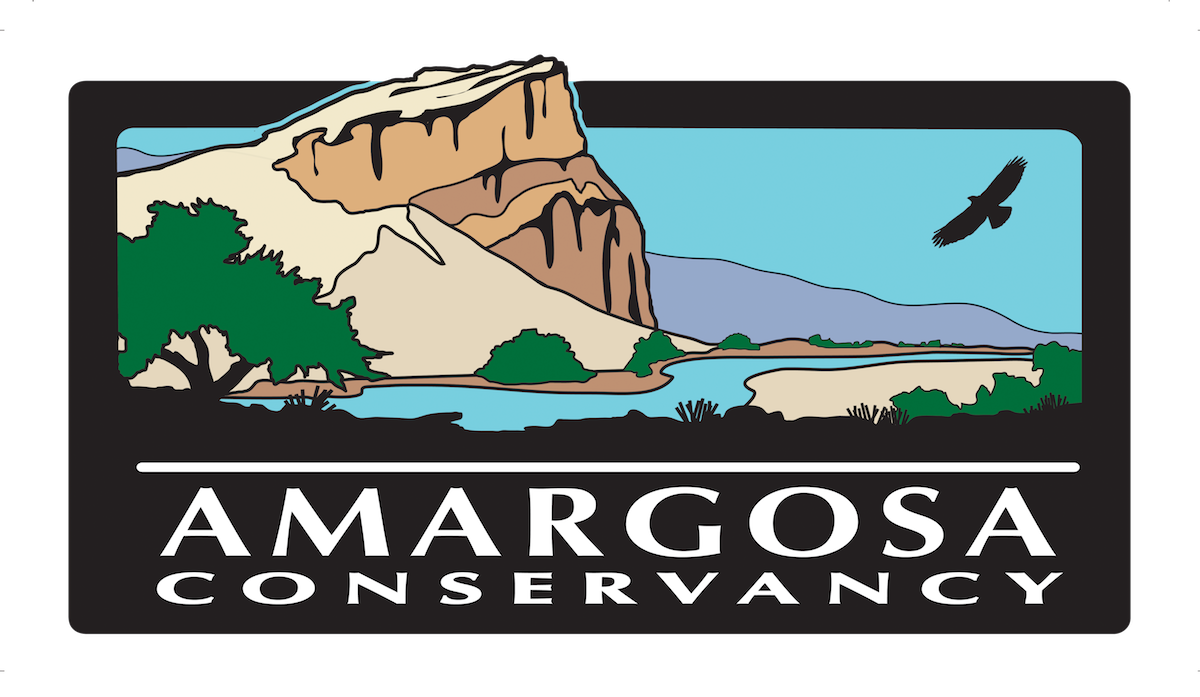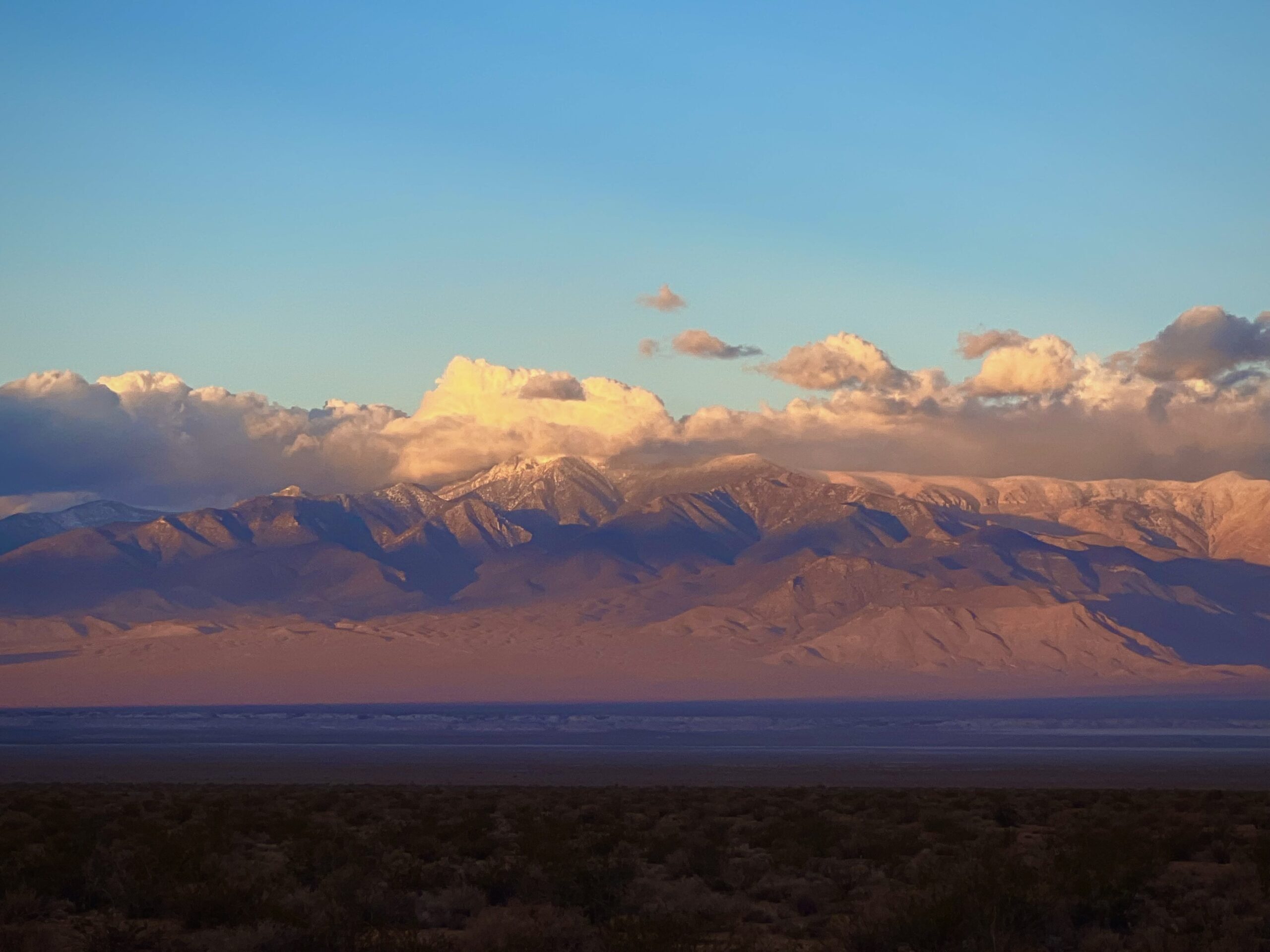Saratoga Springs, Death Valley National Park: photo by Naomi Fraga
by Mason Voehl, executive director
Standing in the driveway of my home in Las Vegas, I watch cold clouds drag their snow-laden bellies across the high peaks of the Spring Mountains for the first time of the season. It’s been so long since I’ve seen snow that I’d almost forgotten how transformative a dusting of flakes can be in the desert. The snow that falls on the sky island of the Spring Mountains is a crucial source of groundwater recharge for the Amargosa Basin. As snow melts into water, it flows slowly but steadily through the permeable limestone into the aquifer far below. Every flake of it means life for desert springs.
Raised in Minnesota, snow is one of the first elements of the natural world that I came to know intimately, through raw prolonged contact dating back to my earliest memories. Perhaps the first time I can recall having my child’s mind blown was in being taught that each snowflake is geometrically unique, each one an intricate crystalline signature of the forces of physics and chemistry falling from the atmosphere. No two are exactly alike, and each lasts just as long as the conditions that crafted them do.
So it is, it seems, with desert springs. On October 25th, researchers working in desert hydrology, botany, and ecology published a groundbreaking paper in the Frontiers in Environmental Science Journal. The paper results from a survey of 48 springs across the California Desert, looking at ecohydrological parameters and conducting a statistical analysis of similarities and differences. In the simplest terms, the primary finding of this survey is this: every spring in the California Desert is as unique and as irreplaceable as a snowflake.
This research suggests that though the “building blocks” of a spring ecosystem may be shared across the region — permeable rock, relatively stable water discharge, etc. — each spring supports a totally distinctive assemblage of flora and fauna, including an exceptionally high number of species that may only exist in one particular spring complex. Over millennia of isolation, each spring has acted as a bastion for wildlife in a landscape that bars widespread species migration due to the extreme conditions of heat and aridity present. The technical language used here belies a few extraordinary takeaways from this paper’s findings. Like water that when poured into a glass vase takes its shape, desert spring ecosystems take the shape of the conditions that created them, making them sensitive to change. Any alteration to a spring’s baseline conditions may result in cascading consequences that we likely cannot fully predict. When that “vase” is cracked, chipped, or molded into a new form, what’s inside changes shape accordingly. Unfortunately, when it comes to spring ecosystems, these changes often cause the spring to trend from being more biodiverse to less.
What that means in practical terms is when a spring’s flora and fauna are impacted or degraded as a result of altered hydrological flows or habitat destruction, it is virtually impossible to fully restore or replace them. Desert springs are radically unique, and radically precious. Each one is a living memory of an ancient world, supporting human and non-human life in its own distinctive way. From a management perspective, this research implores us to conserve the springs that miraculously have not been seriously damaged and degraded by industrial development rather than take on the impossible challenge of restoring them after damage has already been done.
This is not to say that working towards restoring desert springs is not important or worth pursuing. In fact, our organization is in the process of making plans to restore a damaged spring on a former mining property we acquired many years ago. While we will certainly not be able to fully restore this spring, we can ensure that native vegetation has a chance to become reestablished and support a new web of life for generations to come.
This is what I think about as I stand in my driveway looking west, enjoying my body’s first real shiver of the season. I think about the connections between snowflakes and springs, both physical and conceptual, considering how the same base material of hydrogen and oxygen expresses itself in wildly original forms. I think about how despite the vast distances in time and space that separate the mountains in the sky from the springs on the desert floor, all of it is bound together as a cyclical flow of matter and life. And I think about how our organization’s mission to protect the integrity of these ancient cycles has never been more important.


